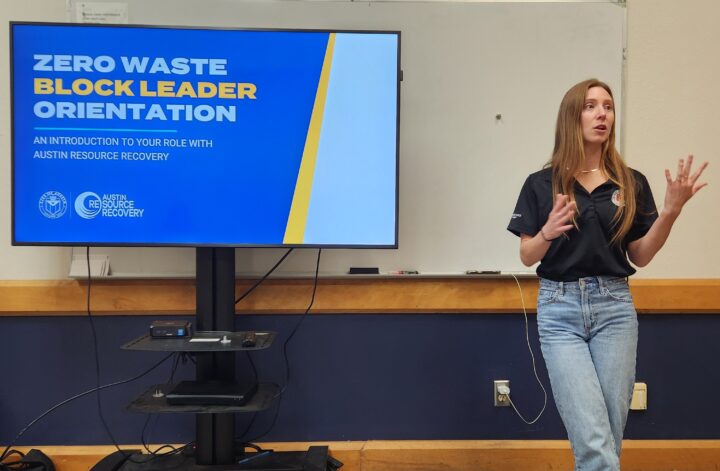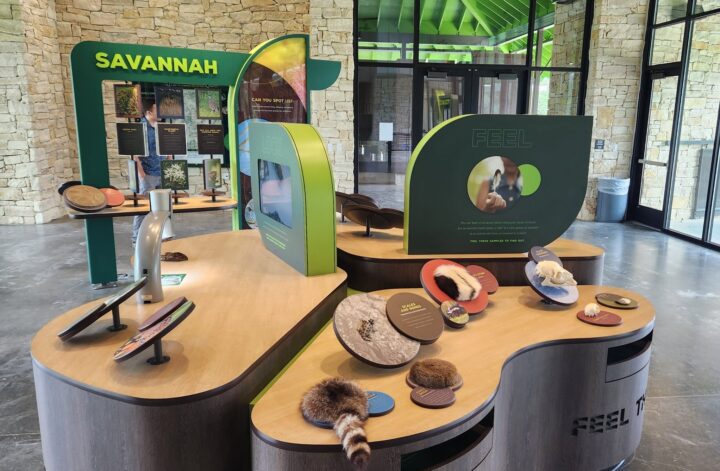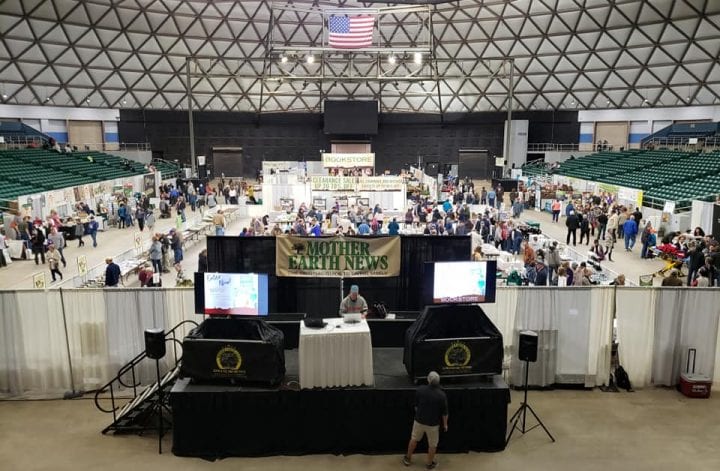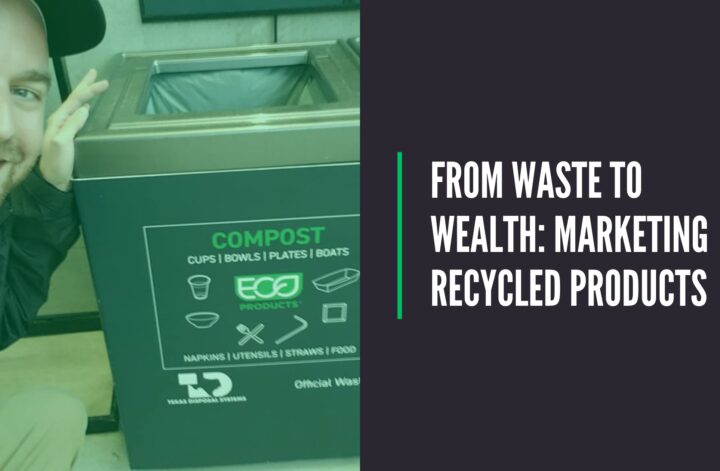I attended the Zero Waste Block Leader Program orientation hosted by Austin Resource Recovery (ARR), and I left feeling both inspired and reconnected to one of my professional passions: waste and resource management.
As Austin continues working toward its ambitious goal of 90% waste diversion by 2040, this program equips residents to play an active role in that mission. The Zero Waste Block Leader Program (ZWBL) trains volunteers to educate their neighbors about recycling, composting, and waste reduction, while also serving as on-the-ground advocates for sustainability. It’s one of those rare opportunities where everyday citizens become part of the city’s environmental strategy – one conversation, one household, and one block at a time.
From Waste Management to Resource Recovery
During my time at Texas Disposal Systems (TDS) (one of Austin Metro’s largest private waste haulers), I developed a strong appreciation for the complex systems that make waste and sustainability work together. Seeing firsthand how recycling streams, compost operations, and landfill logistics function behind the scenes gave me a tangible understanding of what it takes to manage waste at scale.
But what’s always fascinated me most is the communication side of it: how do we take something as unglamorous as trash and turn it into a story that inspires change? That’s exactly where programs like ARR’s Block Leader initiative come in.
While much of the training information wasn’t new to me since I’ve worked in recycling and resource management before — it was refreshing to revisit these topics through a community education lens. The orientation emphasized the why behind the city’s programs and taught us how to help others understand their role in Austin’s zero-waste ecosystem.
The presenters, Lauren Hust and Megan Oberdoerster, did an excellent job explaining not only the logistics of waste collection programming but also the human role behind it. Their message was clear: zero waste isn’t just a government program, it’s a collective shift driven by citizens who care enough to lead by example.
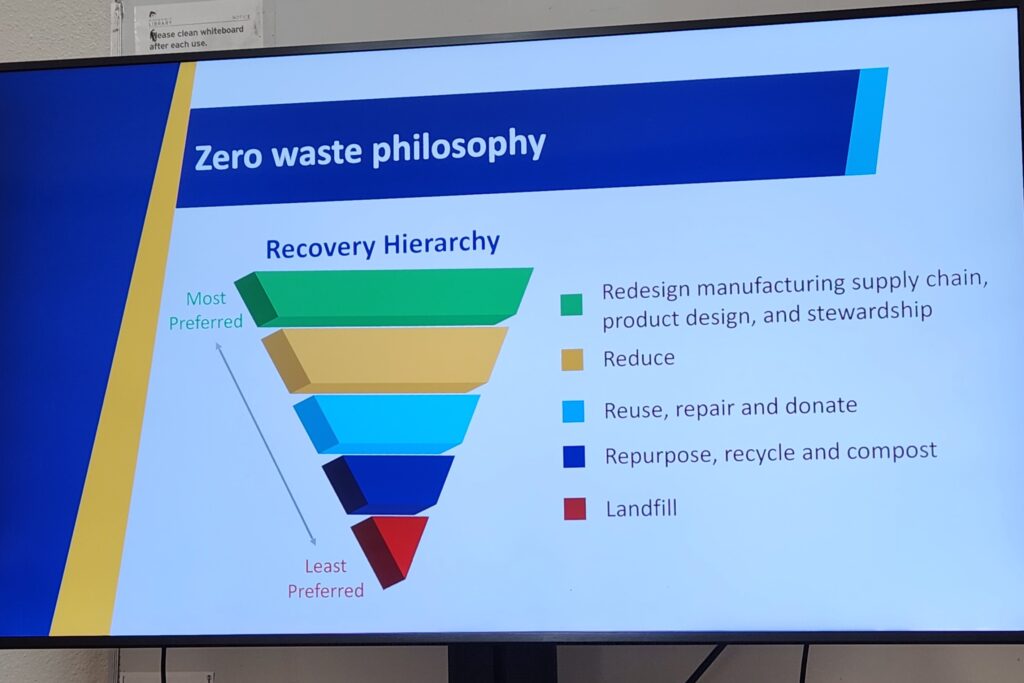
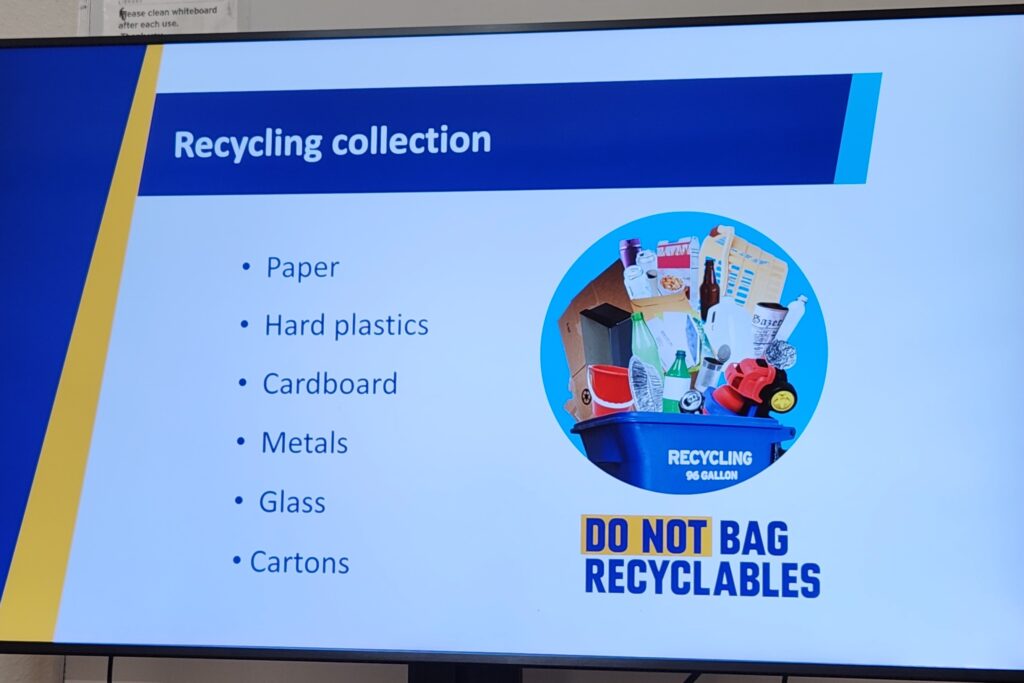
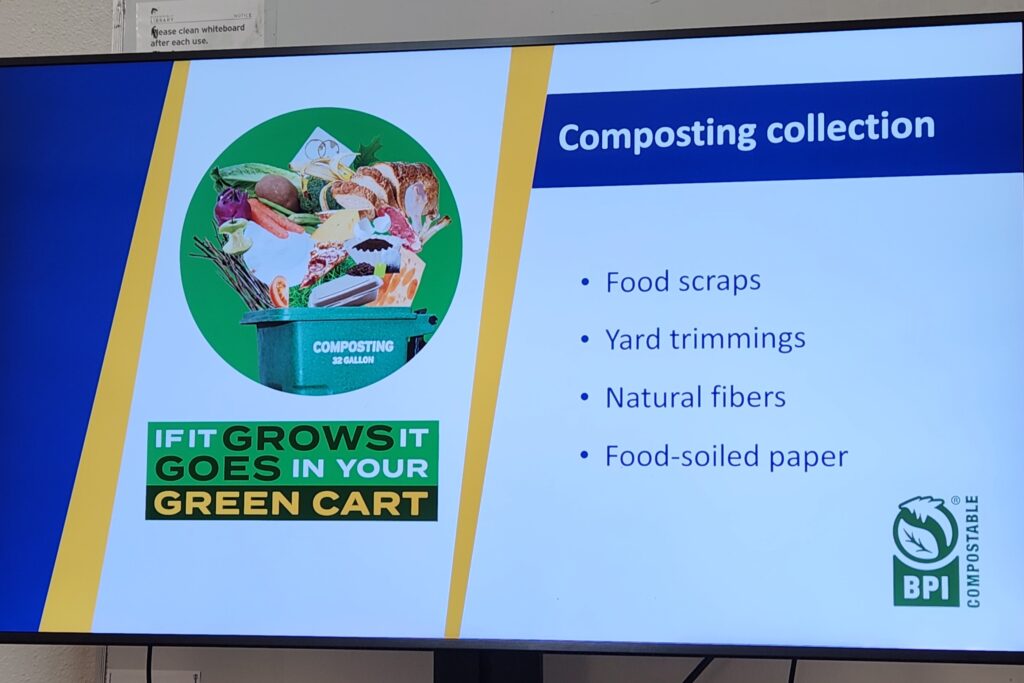
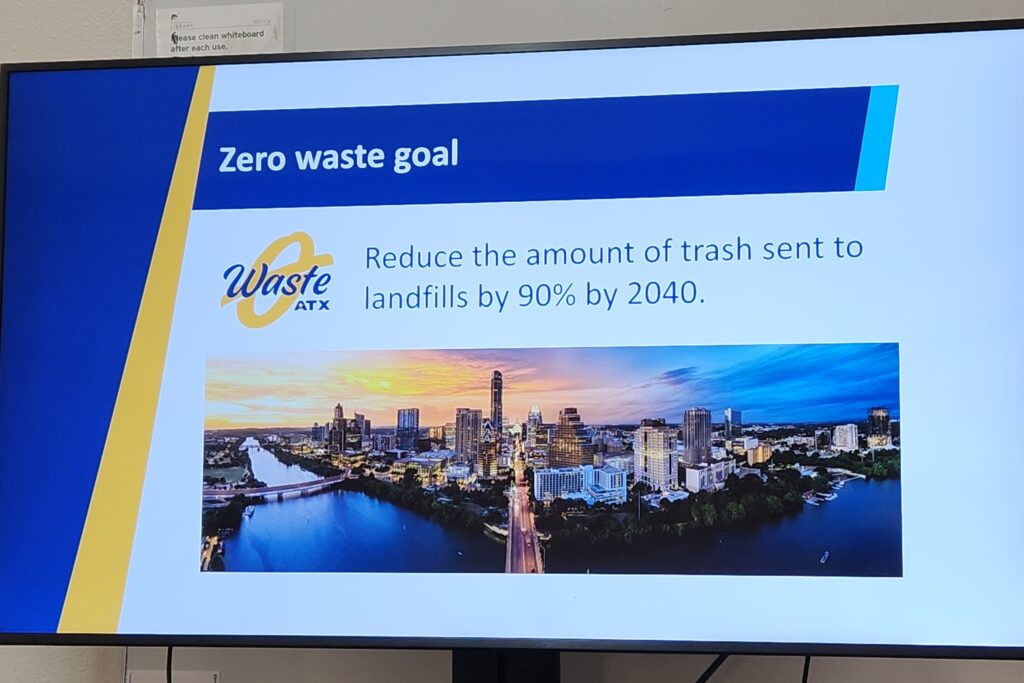
Understanding the Bigger Picture
The presentation walked us through the full spectrum of Austin Resource Recovery’s services, ranging from recycling and compost collection to on-demand bulk and brush pickup, hazardous waste disposal, and the Recycle & Reuse Drop-off Center. They even touched on the Circular Economy Program, which supports reuse and repair through initiatives like Fix-It Clinics, MoveOutATX, and the Circular Austin Showcase.
I was impressed by how interconnected these programs are. ARR isn’t just collecting waste, it’s driving a local transformation from traditional disposal systems toward sustainable resource recovery. That philosophy really aligns with how I’ve approached sustainability communications throughout my career: the idea that waste isn’t waste until we waste it.
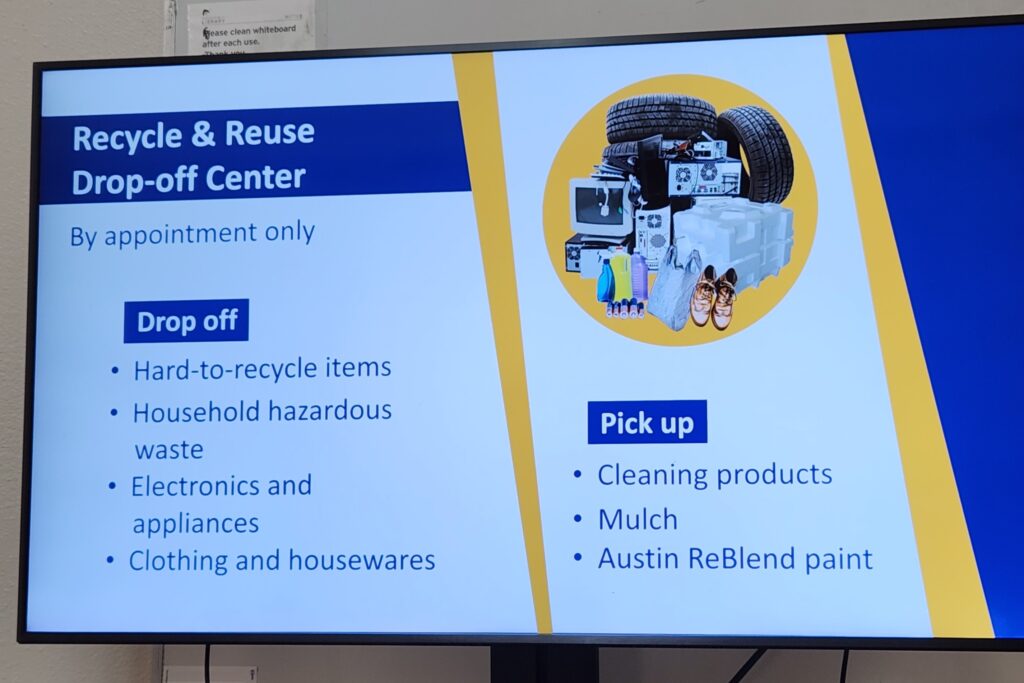
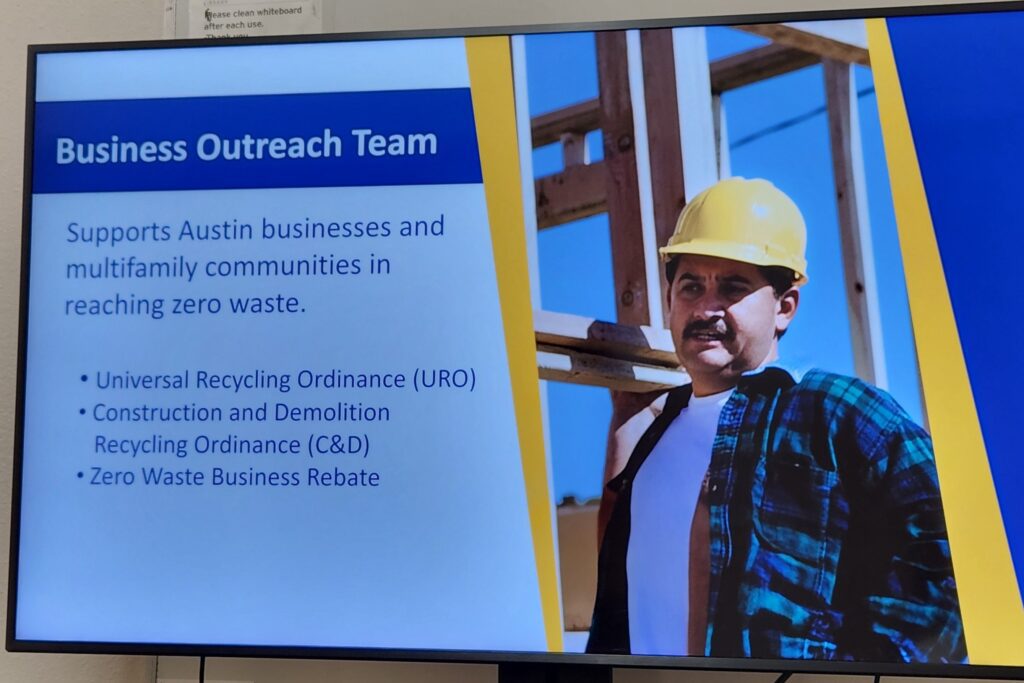
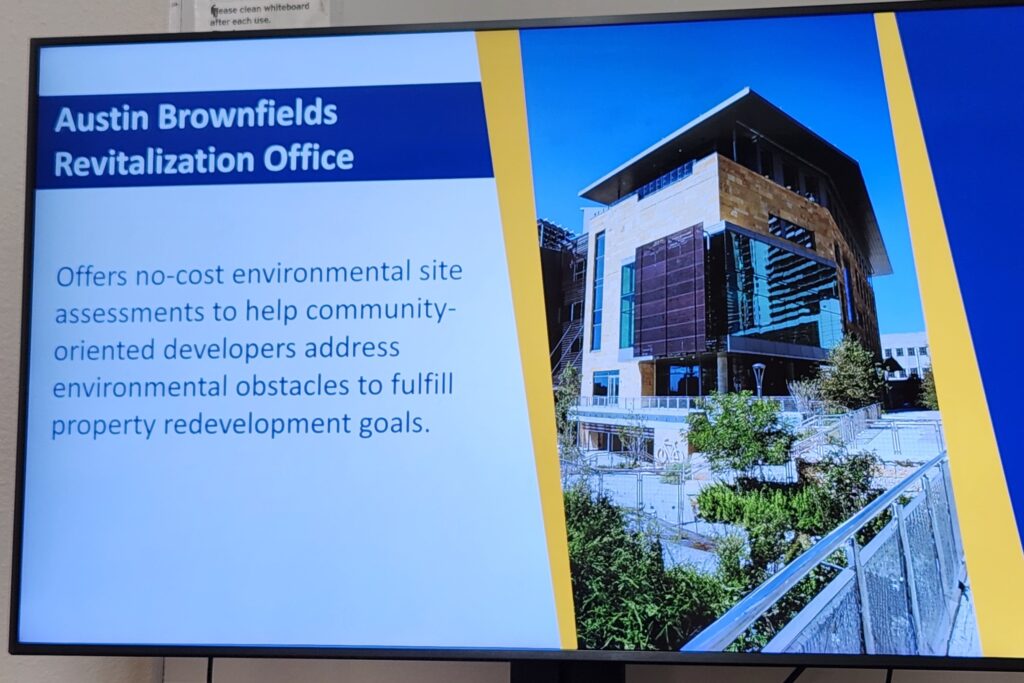
Listening to the Community
One of the most insightful parts of the training was hearing from fellow attendees, especially apartment and condo dwellers, who face unique challenges since their waste and recycling are often managed by private haulers. Many expressed frustration over limited recycling options, inconsistent signage, and lack of education for residents in multifamily housing.
As someone who’s worked on both residential and commercial sectors of waste management, I found these discussions relatable. They highlighted how policy, education, and infrastructure gaps can make it difficult for even the most well-intentioned residents to participate in zero-waste practices. It’s a reminder that education alone isn’t enough — accessibility and communication are just as critical.
The presenters encouraged us to get creative in our outreach: whether hosting small educational E-Waste events, creating neighborhood newsletters, starting composting demos, or simply having one-on-one conversations. Each Block Leader can define what community engagement looks like for their neighborhood.
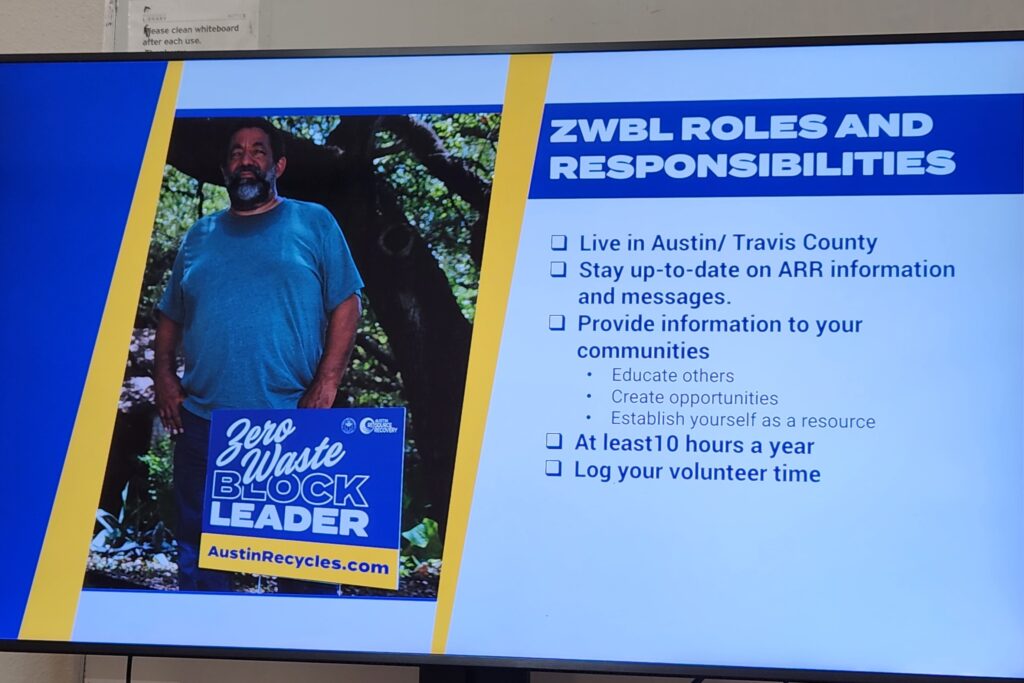
The Power of Connection
What I liked most about the event was the sense of shared purpose. Sitting in a room with other passionate Austinites, people who genuinely care about their impact, reminded me of why I got into sustainability in the first place. It’s easy to get caught up in policies, metrics, and technicalities, but at the heart of every environmental initiative are people who care enough to act.
The Zero Waste Block Leader program bridges that gap beautifully. It empowers volunteers to be both educators and connectors, translating complex systems into everyday actions that neighbors can understand and follow. It’s grassroots sustainability at its finest.
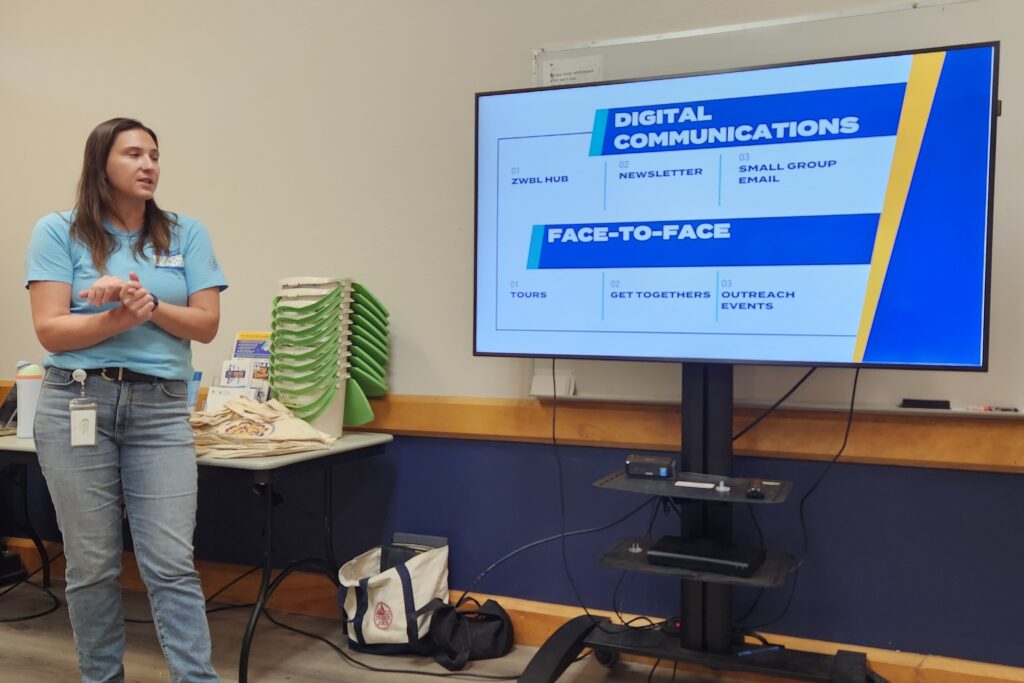
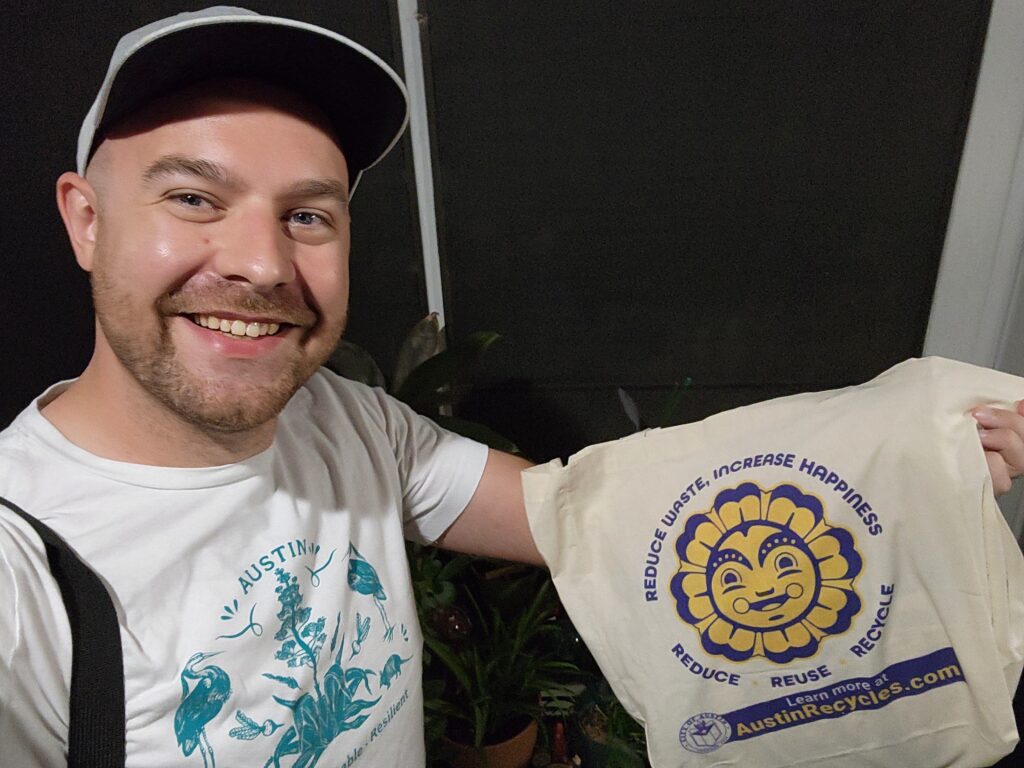
Looking Ahead
As I begin my journey as a Zero Waste Block Leader, I’m excited to reapply my background in communications and sustainability toward local action. My goal is to help make resource recovery more approachable, to show that sustainability isn’t about perfection, but participation.
Austin is already known for its creativity and environmental spirit. By fostering informed, connected neighborhoods, programs like this one prove that real change starts close to home with the people and places we see every day.
I’m looking forward to seeing how I can contribute to that movement and help keep our city beautiful, responsible, and resilient.
*Content was generated with AI based on my notes and direction, then edited and refined by me for accuracy.

